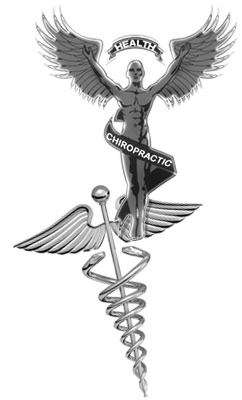Chiropractic vs MD
Educational Requirements for Admission to Medical and Chiropractic College, and for the MD Degree (Doctor of Medicine) and DC degree (Doctor of Chiropractic)
Educational Requirements for Admission to Medical and Chiropractic College, and for the MD Degree (Doctor of Medicine) and DC degree (Doctor of Chiropractic)
 The educational requirements for the MD degree (doctor of medicine) are often exaggerated, and that of the DC degree (doctor of chiropractic) underestimated. Here, actual requirements for each degree are compared.
The educational requirements for the MD degree (doctor of medicine) are often exaggerated, and that of the DC degree (doctor of chiropractic) underestimated. Here, actual requirements for each degree are compared.
Presenting information that contradicts a human’s well-entrenched false beliefs is not a particularly effective way to alter one’s beliefs. With the mass media including television, newsprint, etc., singing the praises of medical physicians with shows like ER, Emergency and the hundreds of medical breakthroughs read in every newspaper around the world, it is no wonder most people have no earthly idea of the comprehensive schooling and in-depth training chiropractic physicians have.
As you’ll see below, it clearly shows that compared to medical colleges, chiropractic colleges require more courses for admission and more classroom hours for graduation. The documentation (see below) is a matter of public record that anyone can easily verify.
Despite the facts presented most people will tenaciously hold to their false beliefs about chiropractic education, Nonetheless, truths are more likely to be accepted, eventually, if broadcast persistently. So, with this in mind, I present the documentation.

Both Chiropractic and Medical Schools require certain course work for admission. These vary from school to school. Very few schools of either type require a bachelor’s degree, although some specify that they prefer the applicant have such a degree.
Chiropractic colleges do not require the MCAT. Some medical schools do. Contrary to common belief, some medical schools (including high profile institutions) require the bare minimum of undergraduate requirements.
We took the admission requirements for medical schools from the publication titled: Medical School Admission Requirements, 1997-1998: United States and Canada, 47th edition (published by The Association of American Medical Colleges). Admission requirements for accredited chiropractic schools are dictated by the Council on Chiropractic Colleges (the agency appointed by the U.S. Dept. of Education to accredit chiropractic colleges).
The Parker College study reported that on average, chiropractic college involves 372 more classroom hours than medical school. Chiropractic students also have more hours of training in anatomy, physiology, diagnosis, and orthopedics (the musculoskeletal system).
It should be apparent from looking at the data below that in general, the chiropractic student has a more extensive classroom education and practical training in these areas, particularly in diagnosis, than the medical student.
| College Courses |
Parker Chiropractic College |
Harvard Medical School |
Stanford University |
| Biological Science (with lab) | 1 Year |
1 Year |
1 Year |
| General or Inorganic Chemistry | 1 Year |
1 Year |
1 Year |
| Organic Chemistry (with lab) | 1 Year | 1 Year |
1 Year |
| Physics (with lab) | 1 Year | 1 Year |
1 Year |
| English or Communicative Skills | 1 Year |
||
| Psychology | 1/2 Year |
||
| Humanities or Social Sciences | 22.5 quarter hours |
||
| Electives | 6 to 18 quarter hours |
These basic educational requirements for graduates of both chiropractic and medical schools show that although each has its own specialties, the hours of classroom instruction are about the same. (The class hours for basic science comparisons were compiled and averaged following a review of curricula of 18 chiropractic colleges and 22 medical schools.
| Chiropractic College | Medical School | |
| 456 | Anatomy/Embryology | 215 |
| 243 | Physiology | 174 |
| 296 | Pathology | 507 |
| 161 | Chemistry/Biochemistry | 100 |
| 145 | Microbiology | 145 |
| 408 | Diagnosis | 113 |
| 149 | Neurology | 171 |
| 56 | Psychology/Psychiatry | 323 |
| 66 | Obstetrics & Gynecology | 284 |
| 271 | X-ray | 13 |
| 168 | Orthopedics | 2 |
| 2,419 | 2,047 |
The U.S. Department of Education, through the separate accrediting agencies for chiropractic and medical schools, dictates the credentials of faculty members. In both chiropractic and medical schools, the classes for the first two academic years are usually basic sciences.
Faculty members in the basic sciences divisions are either Ph.D.s in each subject taught (such as microbiology or biochemistry), or D.C.s, M.D.s, or D.O.s who also have bachelors, masters, or Ph.D. degrees in the basic science subjects being taught. Classes in the clinical sciences division are usually taught by D.C.s, M.D.s, or D.O.s.
In many chiropractic colleges, M.D.s or D.O.s are permitted to teach certain courses, such as laboratory diagnosis. However, D.C.s must teach courses in which M.D.s or D.O.s don’t have sufficient education or practical clinical experience.
Some chiropractic colleges have active research departments in which researchers conduct both basic science and clinical studies. The subjects of study range from biomechanics to biochemistry.
Traditionally, chiropractic colleges had only minuscule research funding compared to medical schools. I recall political medicine using this fact as evidence that chiropractic wasn’t legitimate.
However, the medical critics failed confess that the minimal funding or lack of it was a result of political medicine doing everything in its power to block funding of studies in chiropractic college.
Obviously, political medicine used a circular and disingenuous argument to deceive the public. Today, chiropractic colleges are receiving more funding for research.
Some medical schools have D.C.s as full-time faculty members. The University of Colorado School of Medicine, for example, has a full-time chiropractic radiologist as a faculty member.
Dr. James P. Barassi, a chiropractor, is Research Fellow in Medicine at Harvard Medical School. D.C.s occasionally teach part-time or special classes through medical schools.
It’s not unusual for D.C.s and M.D.s to co-teach both medical and chiropractic audiences. Most often, chiropractic physicians and medical neurologists or neurosurgeons co-teach.
Licensing and Postgraduate Education
The chiropractic physician must pass four levels of national board exams and a physical therapy exam to be eligible to sit for state board examinations. State board exams involve both written examination and oral practical exams involving clinical practice and x-ray interpretation.
After graduation, the DC may undergo postgraduate training to become board certified as a chiropractic radiologist, neurologist, orthopedist, internist, family practitioner, sports physician, rehabilitation specialists, clinical nutritionist, or pain management specialist. Medical physicians also may become board certified.
Options such as surgery are open to medical and osteopathic physicians. Board certification is not necessary for either type of physician to become licensed and to practice. Chiropractic physicians are required to obtain continuing education units each year for license renewal.